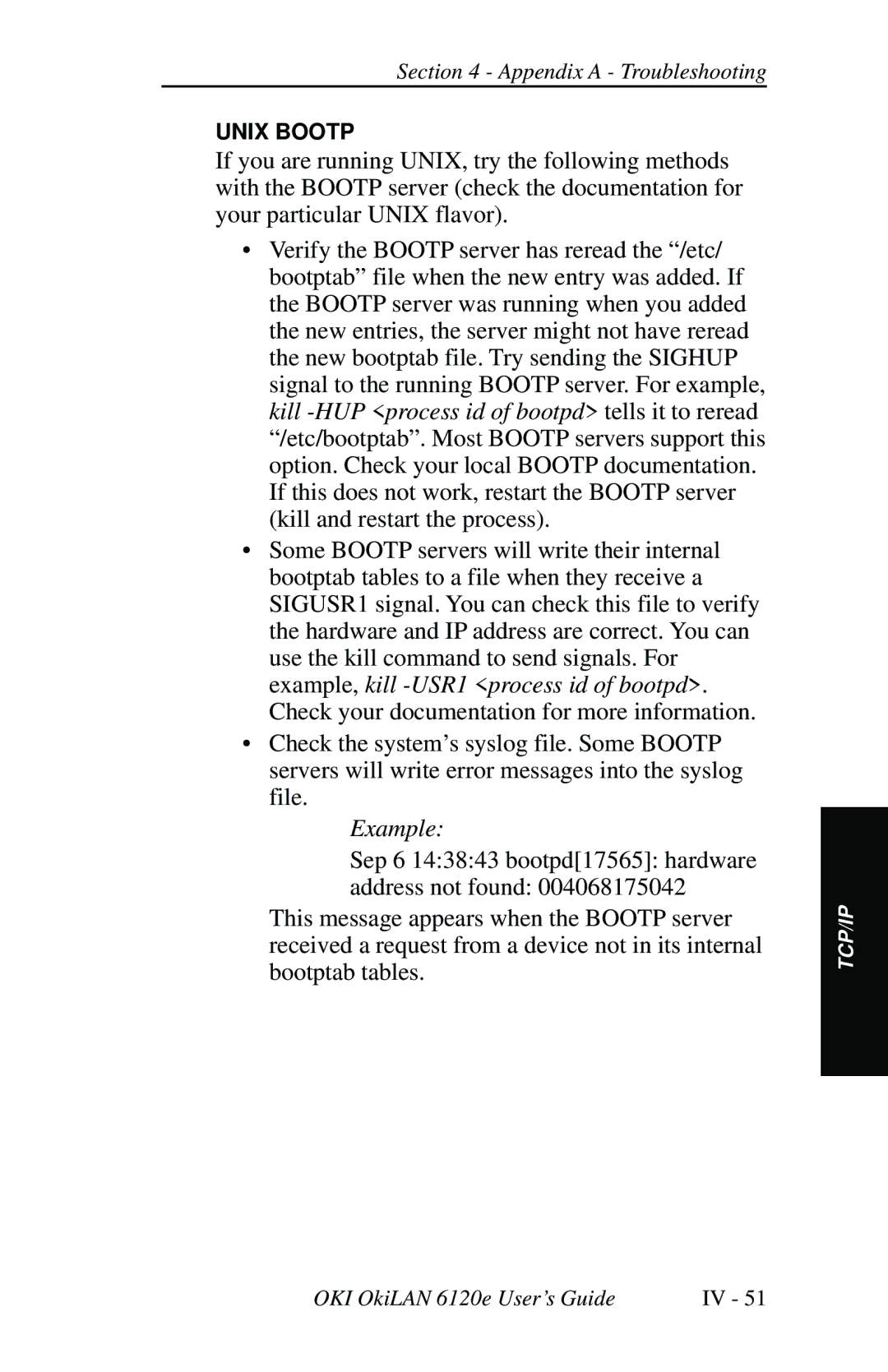
Section 4 - Appendix A - Troubleshooting
UNIX BOOTP
If you are running UNIX, try the following methods with the BOOTP server (check the documentation for your particular UNIX flavor).
•Verify the BOOTP server has reread the “/etc/ bootptab” file when the new entry was added. If the BOOTP server was running when you added the new entries, the server might not have reread the new bootptab file. Try sending the SIGHUP signal to the running BOOTP server. For example, kill
•Some BOOTP servers will write their internal bootptab tables to a file when they receive a SIGUSR1 signal. You can check this file to verify the hardware and IP address are correct. You can use the kill command to send signals. For example, kill
•Check the system’s syslog file. Some BOOTP servers will write error messages into the syslog file.
Example:
Sep 6 14:38:43 bootpd[17565]: hardware
address not found: 004068175042 This message appears when the BOOTP server received a request from a device not in its internal bootptab tables.
TCP/IP
OKI OkiLAN 6120e User’s Guide | IV - 51 |
